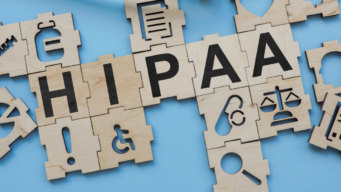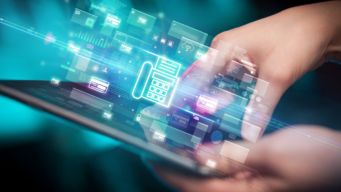In today’s fast-paced and ever-evolving contact center landscape, performance and efficiency are critical factors in achieving business success. To achieve optimal results, contact centers must rely on their agents to perform at their peak, and for that, they must be motivated and engaged. One powerful strategy that can be used to improve agent performance and efficiency while increasing motivation and job satisfaction is through a performance and incentive gamification program. Research from Zippia found that on average, employees experience a 48% engagement increase with a gamified work experience. This same research found that 72% of people say gamification motivates them to do tasks and work harder on the job.
At the Contact Center, a performance and incentive gamification program can utilize key performance indicators (KPIs) or metrics to incentivize agents and improve their performance. Some of the contact KPIs that can be used in a gamification program include First Call Resolution (FCR), Average Handle Time (AHT), Schedule Adherence, Customer Satisfaction (CSAT), and Service Level Agreement (SLA) adherence.
Let’s talk about these metrics and why they are important, beginning with First Call to Resolution (FCR). It is a crucial metric that measures the percentage of calls or interactions resolved on the first attempt. FCR is a key indicator of customer satisfaction, and agents who excel in this metric can be recognized and rewarded through a gamification program, leading to increased motivation and performance.
Second, Average Handle Time (AHT) is another critical metric that measures the time agents take to handle a call or interaction with a customer. AHT is a key factor in determining the overall efficiency of a contact center, and it is a KPI that can be used in a performance and incentive gamification program to motivate agents to reduce call duration while maintaining high levels of customer satisfaction.
Furthermore, schedule adherence is a metric that measures the percentage of time an agent spends actively working on calls or interactions during their scheduled shift. Adhering to a schedule is essential for maintaining productivity and ensuring that customers receive timely service. A gamification program that incentivizes agents to adhere to their schedule and consistently meet their targets can lead to increased efficiency and improved performance.
In addition, Customer Satisfaction (CSAT) is a metric that measures the overall satisfaction level of customers with their interactions with an agent. CSAT can be used as a KPI in a performance and incentive program to incentivize agents to deliver outstanding customer service and to ensure that customers leave every interaction feeling satisfied and positive about their experience.
Lastly, Service Level Agreement (SLA) adherence is a critical metric that measures the percentage of calls or interactions answered within a specific time frame. Adhering to SLAs is essential for ensuring that customers receive timely and efficient service. A performance and incentive gamification program that rewards agents who consistently meet or exceed SLA requirements can drive improved performance and efficiency.
Benefits of a performance and incentive gamification program
Indeed, setting clear and achievable goals is one of the most critical aspects of a performance and incentive gamification program. By defining specific objectives, agents are more likely to stay focused on the task at hand and be motivated to achieve the desired results. Goals can also help agents understand what is expected of them and enable them to prioritize their tasks accordingly, leading to more efficient work practices.
Regular feedback is another crucial element that can keep agents motivated and engaged in their work. By providing instant feedback on performance and progress, agents can identify areas where they need improvement and work on them proactively. This can lead to a continuous cycle of improvement and self-correction, ultimately leading to higher levels of efficiency.
Performance and incentive gamification programs can also be used to enhance training and development, making it more engaging and effective. By incorporating game-like elements, agents can be introduced to new concepts and skills in a fun and engaging way, leading to better retention and application of the material. This can lead to more efficient and effective work practices, ultimately contributing to better overall performance.
Team building is another area where incentive programs can be used to improve agent performance and efficiency. By promoting collaboration and teamwork, agents can work together to achieve shared goals and compete with other teams, fostering a sense of camaraderie and shared purpose. This can lead to increased productivity and efficiency, ultimately driving better overall results.
Incentives, such as badges, points, leaderboards, and other rewards, can also be used to recognize and reward agents for their hard work and achievements. These game-like elements can create a sense of healthy competition among agents, driving them to achieve higher levels of performance and efficiency.
A well-designed performance and incentive program can significantly improve agent performance and efficiency. By setting clear goals, providing regular feedback, recognizing achievements, promoting training and development, fostering teamwork, and personalizing the experience, agents can be motivated and engaged in their work, leading to improved results and job satisfaction. Organizations that implement gamification programs can reap the benefits of higher productivity, better efficiency, and a more engaged and motivated workforce.
In conclusion, the implementation of a performance, incentive, and gamification program is a powerful strategy that can help contact centers achieve their business goals. By utilizing KPIs or metrics, setting clear goals, providing regular feedback, promoting training and development, fostering teamwork, and incentivizing agents with game-like elements, contact centers can improve agent performance and efficiency, ultimately leading to better overall results and a more engaged and motivated agent workforce.
Attend this information session webinar to learn more about how performance and incentives gamification strategies can make your contact center agents happier, helping your organization deliver on a total experience.




